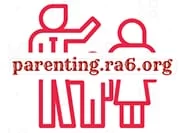How to Teach Montessori at Home: A Guide for Parents
Montessori education is a unique approach to learning that promotes self-directed activity, hands-on learning, and collaborative play. Developed by Dr. Maria Montessori, it aims to foster independence and a love for learning in children. While Montessori schools are popular, you can also teach Montessori at home, creating a nurturing environment that encourages your child’s natural curiosity.
This article will guide you through the steps to implement Montessori teaching methods at home, ensuring your child benefits from this holistic approach to education.

Table of Contents
Understanding the Montessori Philosophy
![]()
Before diving into how to teach Montessori at home, it’s essential to grasp the core principles of Montessori education. The Montessori philosophy is built on the belief that children learn best when they are engaged in purposeful activity. It emphasizes respect for the child, the importance of a prepared environment, and the role of the educator as a guide rather than a traditional teacher.
- Respect for the Child: Montessori education views children as naturally eager for knowledge and capable of initiating learning in a supportive, thoughtfully prepared environment.
- Prepared Environment: This refers to a learning space that is orderly, aesthetically pleasing, and tailored to the child’s stage of development, with materials accessible for them to use independently.
- The Role of the Educator: In Montessori, the educator acts as a guide, facilitating the child’s learning without direct instruction, allowing them to learn through their discoveries.
Creating a Montessori Environment at Home
![]()
To teach Montessori at home, start by creating an environment that mirrors the Montessori classroom. Here’s how:
- Designate Learning Spaces: Choose areas in your home that can be dedicated to Montessori activities. These areas should be uncluttered and inviting, with materials displayed on low shelves that are easily accessible to your child.
- Choose Appropriate Materials: Select Montessori materials that align with your child’s developmental stage. These materials should be made of natural elements whenever possible and should be designed to support self-directed learning.
- Emphasize Order: Montessori environments are orderly and encourage children to take responsibility for their space. Teach your child to return materials to their proper place after use.
Implementing a Montessori at Home Curriculum
![]()
While there is no one-size-fits-all Montessori at home curriculum, there are key learning areas that you should include:
- Practical Life: These activities foster independence and include tasks like dressing, cleaning, and food preparation.
- Sensorial: These materials help children refine their senses and include items like color tablets, sound cylinders, and texture fabrics.
- Language: Montessori language materials support reading and writing readiness through activities that promote phonemic awareness and vocabulary development.
- Mathematics: Montessori math materials introduce concepts like counting, place value, and operations using concrete, manipulative tools.
- Cultural Studies: This area includes geography, science, and art, encouraging exploration and appreciation of the world and diverse cultures.
How to Teach Montessori Math at Home
![]()
Montessori math is particularly unique because it makes abstract concepts concrete. Here’s how to teach Montessori math at home:
- Use Hands-on Materials: Incorporate tools like number rods, golden beads, spindle boxes, and sandpaper numbers to make learning tactile and visual.
- Follow the Child’s Pace: Allow your child to explore math materials at their own pace, introducing new concepts as they master current ones.
- Connect Math to Daily Life: Engage your child in everyday math-related tasks like measuring ingredients for a recipe or counting items during grocery shopping.
Montessori Style Learning at Home for Different Age Groups
![]()
Montessori at home can be adapted for children of various ages:
- Infants (0-3 years): Focus on sensory activities and practical life skills. Provide a safe, exploratory environment with simple toys and activities.
- Toddlers (3-6 years): Introduce more structured activities like sorting, counting, and letter recognition, while still allowing for ample free play and exploration.
- Elementary-aged children (6-12 years): Offer more complex materials and activities that encourage problem-solving, research, and critical thinking.
Montessori Teaching Methods at Home
![]()
Adopting Montessori teaching methods at home means shifting your role from traditional teacher to guide. Here’s how to do it:
- Observe Your Child: Take the time to watch your child’s interests and learning style. This observation will guide you in preparing your environment and choosing activities.
- Encourage Independence: Allow your child to take the lead in their learning. Offer support when needed, but refrain from stepping in too quickly.
- Emphasize Process Over Product: Focus on the learning that happens during an activity, rather than the end result. Celebrate effort and concentration.
Challenges and Solutions When You Teach Montessori at Home
![]()
Teaching Montessori at home comes with its challenges, but they can be overcome with creativity and flexibility:
- Space Limitations: If space is an issue, create multi-use areas that can be easily adapted for Montessori activities.
- Cost of Materials: Montessori materials can be expensive, but many can be DIY-ed or substituted with household items or affordable alternatives.
- Staying Consistent: It can be challenging to maintain a Montessori approach consistently. Set realistic goals and be flexible, adapting as needed to fit your family’s lifestyle.
Frequently Asked Questions
![]()
What is Montessori and how can I use it at home?
Montessori is an educational approach that focuses on individual learning and hands-on activities. To use it at home, create a child-friendly space, provide access to age-appropriate resources, and allow your child to learn at their own pace through exploration and play.
How do I set up a Montessori space at home?
Choose a quiet, well-lit area in your home. Use low shelves for materials, child-sized furniture, and organize learning resources into categories. Keep the space tidy and inviting to encourage independent learning.
What kind of activities are used in Montessori education?
Montessori activities are usually hands-on and can include life skills (like dressing frames, sweeping), sensory-based activities (like sandpaper letters, sound boxes), and academic skills (like counting beads, puzzle maps).
How do I choose Montessori materials for my child?
Select materials that match your child’s developmental stage, interests, and abilities. Start with basic items that teach practical life skills, sensory development, and basic math and language concepts.
Can I use Montessori principles with babies and toddlers?
Yes, you can adapt Montessori principles for any age. For babies and toddlers, focus on creating a safe, exploratory environment with age-appropriate toys that stimulate the senses and motor development.
How much time should we spend on Montessori activities each day?
There is no set time limit; it depends on your child’s interest and concentration. Start with short periods and gradually increase as your child grows older and more engaged with the activities.
How do I incorporate Montessori methods into our daily routine?
Integrate Montessori by encouraging independence (like dressing themselves), involving your child in household chores (like setting the table), and providing structured choices throughout the day.
How can I ensure that I’m following my child’s lead in learning?
Observe your child’s interests and offer activities that align with those interests. Avoid interrupting when they’re focused on a task and be flexible in adapting activities to keep them challenging and engaging.
What if my child loses interest in an activity quickly?
It’s normal for children to have varying attention spans. If they lose interest, don’t force it. You can try to reintroduce the activity later or modify it to better suit their preferences.
Do I need specific training to teach Montessori at home?
While formal training can be beneficial, it’s not necessary to implement Montessori principles at home. You can learn through books, online resources, and observing your child’s responses to the environment you create.
Conclusion: Embracing Montessori at Home for Lifelong Learning
![]()
Teaching Montessori at home is more than an educational choice; it’s a lifestyle that embraces curiosity, independence, and respect for the child’s natural development. By creating a Montessori environment at home, implementing a Montessori-style curriculum, and adapting your teaching methods, you can provide your child with a rich, engaging learning experience.
Whether you’re teaching Montessori math at home or exploring cultural studies, the key is to follow your child’s lead, support their growth, and celebrate their discoveries. With these insights and strategies, you’re well-equipped to foster a love of learning that will last a lifetime.
Originally posted 2023-01-31 19:52:53.
